
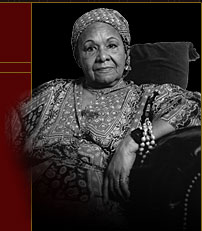
It seems almost impossible that Katherine Dunham's remarkable life, filled with accomplishments in diverse fields, could have been lived by only one person. As
an innovator and artist, she had few peers. It is revealing that
Miss Dunham has been universally studied, written about, and praised
across disciplines, not only from expected perspectives of dance
and the arts, but also through the lenses of psychology, anthropology,
and sociology. Her life and her work uniquely encompassed the academic
and the popular while transcending the boundaries we usually erect
between high and mass culture.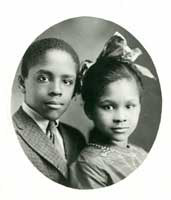 Katherine
Dunham was born in 1909 to an African American father (Albert Dunham
Sr.) and a mother (Fanny Taylor Dunham) who was described
as French Canadian with Indian heritage. Although Katherine was born at a hospital
in Chicago, the family actually lived in nearby Glen Ellyn, Illinois. Her mother
died when Katherine was four years old, and she and her brother (Albert
Dunham Jr.) lived temporarily with their aunt on the south side of
Chicago. When Katherine was six years old, she and her brother moved with their
father and a new stepmother to Joliet, Illinois. Katherine
Dunham was born in 1909 to an African American father (Albert Dunham
Sr.) and a mother (Fanny Taylor Dunham) who was described
as French Canadian with Indian heritage. Although Katherine was born at a hospital
in Chicago, the family actually lived in nearby Glen Ellyn, Illinois. Her mother
died when Katherine was four years old, and she and her brother (Albert
Dunham Jr.) lived temporarily with their aunt on the south side of
Chicago. When Katherine was six years old, she and her brother moved with their
father and a new stepmother to Joliet, Illinois. |
While living in Chicago, Dunham was present during the influx of African Americans fleeing the South. She saw firsthand the ugly realities that people faced trying to escape Jim Crow by moving to northern cities. She further witnessed the injustices imposed on blacks who were not welcomed in the North, being forced to live in segregated communities in subpar housing structures and to work at menial jobs in order to provide sustenance for their families. In 1941, Miss Dunham defied cultural norms of the United States by marrying the Canadian-born designer John Thomas Pratt. They met when Pratt was the supervisor of the costume department at the Federal Theater in New York. In an interview with Pratt in 1981, Vèvè A. Clark perfectly described his role with the Dunham Company as technical advisor and consulting director of the Katherine Dunham School of Arts and Research. Pratt described his designs for Miss Dunham as dynamic, and his main concern was that the costumes provided freedom of movement. Often working with a tight budget, Pratt created costumes by piecing together recycled material. Except for the three years during the mid-1940s that he served in the military, Pratt choreographed almost all of Dunham’s performances throughout her career. Miss Dunham admitted during the process of donating her collections to the Missouri Historical Society (Item History File) that she did not always appreciate the body of work that went into creating her costumes. In speaking about the Afrique headdress, she said:
Pratt understood Miss Dunham better than any choreographer and designed her costumes with her movements in mind. She did learn to appreciate the efforts that Pratt made to enhance her image. In a further description of one of her more controversial performances (choreographed in 1938), Barrel House Blues, Miss Dunham talks about how the material was designed to move with her body while she performed the “shimmy”:
In 1952, Dunham and Pratt adopted a four-year-old child, Marie-Christine, who was living in a Catholic convent in Paris. According to Joyce Aschenbrenner (an anthropologist and Dunham biographer), when Marie-Christine was old enough she traveled with the dance company, but returned to the convent to attend school. She was later enrolled in Swiss boarding schools and would join her parents on holidays and vacations. Through her family Miss Dunham was influenced by multiple art forms. Her father was a guitarist, and her cousin introduced young Katherine to live theatrical performances and stage plays. Miss Dunham learned modern dance in high school and went on to produce, direct, and perform in a “cabaret party” fundraiser for a local African Methodist Episcopal church. At the age of eighteen, Miss Dunham began the study of ballet under Ludmila Speranzeva, one of the few instructors at the time who accepted black students. >> Click on each image to see a larger view. << |
|
| Marie-Christine (daughter), ca 1960. Photograph by Georges Pierre. Missouri Historical Society Photographs and Prints Collection. | 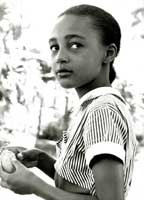 |
Marie-Christine,
daughter of Katherine Dunham and John Pratt, ca. 1953. Missouri Historical Society Photographs and Prints
Collection. |
 |
| Katherine Dunham and John Pratt
(her husband and theatrical designer), 1939. Photograph by (Lette) Valeska, Los Angeles. Missouri
Historical Society Photographs and Prints Collection. |
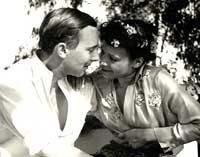 |
| Katherine Dunham portrait, signed "To Albert with many wishes for happiness and much love from Katherine." 1934. Missouri Historical Society Photographs and Prints Collection. | 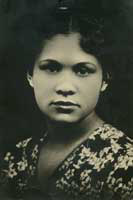 |
| Portrait of Albert Dunham Jr., 1926. Missouri Historical Society Photographs and Prints Collection. | 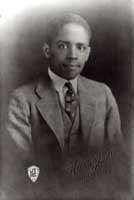 |
| Young Katherine Dunham and her
brother, Albert Dunham Jr., ca. 1920. Missouri Historical Society Photographs and Prints
Collection. |
 |
| Albert Dunham Sr. (father) on porch, n.d. Missouri Historical Society Photographs and Prints Collection. | 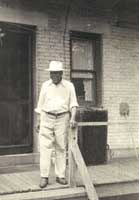 |
| Fanny Taylor Dunham (mother) holding
baby, Albert Jr. (brother), ca. 1910. Missouri Historical Society Photographs and Prints
Collection. |
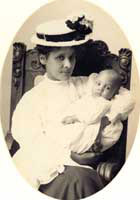 |





